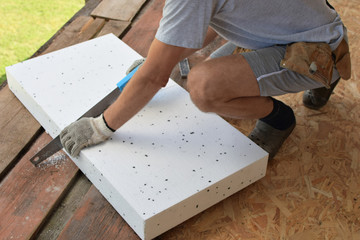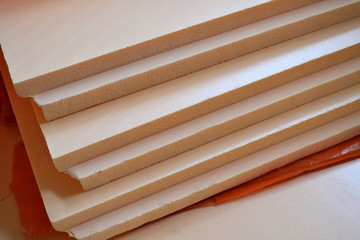Construction Consumer Advocacy Institute

Foam Board Insulation
Part 2
We are starting the first of a series on insulation. Energy cost is going up and we need to do everything we can to help our family budgets and insulation can help us on our heating and cooling cost. The problem is that there are so many types of insulation that it’s confusing. That is why we at the Construction Consumer Advocacy Institute have been established. To educate us on everything you need to know.
If you ever have any questions, please remember that you can always contact us by email execdirector@constructionconsumeradvocacyinstitute.com


Extruded Polystyrene Insulation: Pros, Cons, and R-Value
Are you looking for an insulating material that has excellent moisture resistance, long lifespan, and superior thermal performance? Then, you might want to consider using extruded polystyrene insulation, also known as XPS. This type of insulation is a rigid, closed-cell foam board made from polystyrene polymer and synthetic additives. In this article, we will discuss the pros and cons of using XPS insulation, its R-value, and why it’s an excellent choice for many residential and commercial applications.
How does extruded polystyrene insulation work?
Extruded polystyrene insulation works by trapping air molecules in its closed-cell structure. This trapped air creates an insulating barrier that reduces heat transfer through conduction and convection. Moreover, XPS has low water absorption, making it an excellent choice for applications that require high moisture resistance, such as basements, wall cavities, roofs, and foundations.
What are the pros of using extruded polystyrene insulation?
One of the primary advantages of using XPS insulation is its high R-value. R-value is a measure of a material’s thermal resistance, and the higher the value, the better the insulation’s performance. Extruded polystyrene insulation has an R-value of 4.5 to 5.0 per inch of thickness, which is higher than other insulation types like fiberglass and cellulose. Moreover, XPS is highly resistant to moisture, making it an excellent choice for wet or humid environments. It’s also durable, flexible, lightweight, easy to install, and won’t settle or degrade over time.
What are the cons of using extruded polystyrene insulation?
The primary disadvantage of using XPS insulation is its environmental impact. Manufacturing polystyrene foam involves the use of fossil fuels, which contribute to greenhouse gas emissions. Moreover, XPS is not biodegradable, and its disposal can create long-term pollution problems. However, some manufacturers are using recycled materials and improving their production processes to reduce the impact of XPS on the environment.
What are the applications of extruded polystyrene insulation?


Extruded polystyrene insulation is versatile and can be used in a wide range of applications, including residential and commercial construction, industrial facilities, cold storages, and transportation. It’s often used as wall sheathing, roof insulation, foundation insulation, and perimeter insulation. Moreover, XPS has excellent compressive strength and is suitable for heavy-load applications like plaza decks, parking structures, and landscaping.
How to install and maintain extruded polystyrene insulation?

Installing extruded polystyrene insulation is relatively easy and can be done using mechanical fasteners, adhesive, or overlap joints. However, it’s crucial to follow the manufacturer’s guidelines to ensure the correct installation and avoid thermal bridging. Moreover, XPS insulation requires little maintenance, but it’s essential to inspect it periodically for any signs of damage or degradation.
Conclusion:
In conclusion, extruded polystyrene insulation is an excellent insulating material with many benefits, including high R-value, moisture resistance, durability, and versatility. Despite its environmental impact, XPS is an excellent choice for many applications that require high thermal performance and moisture resistance. If you’re considering using extruded polystyrene insulation, make sure to consult with a professional contractor and follow the manufacturer’s guidelines for proper installation and upkeep. R-value of 4.5 to 5.0 per inch
